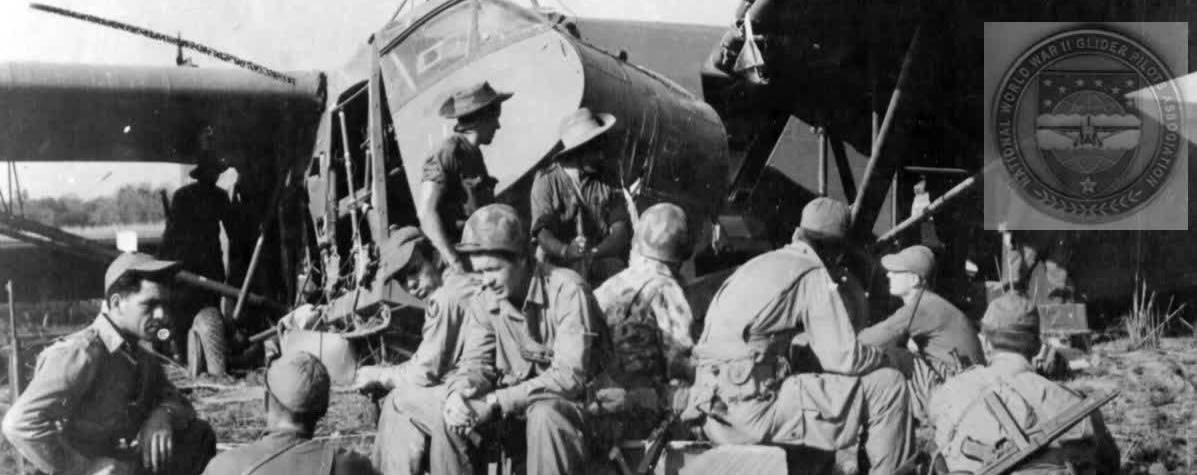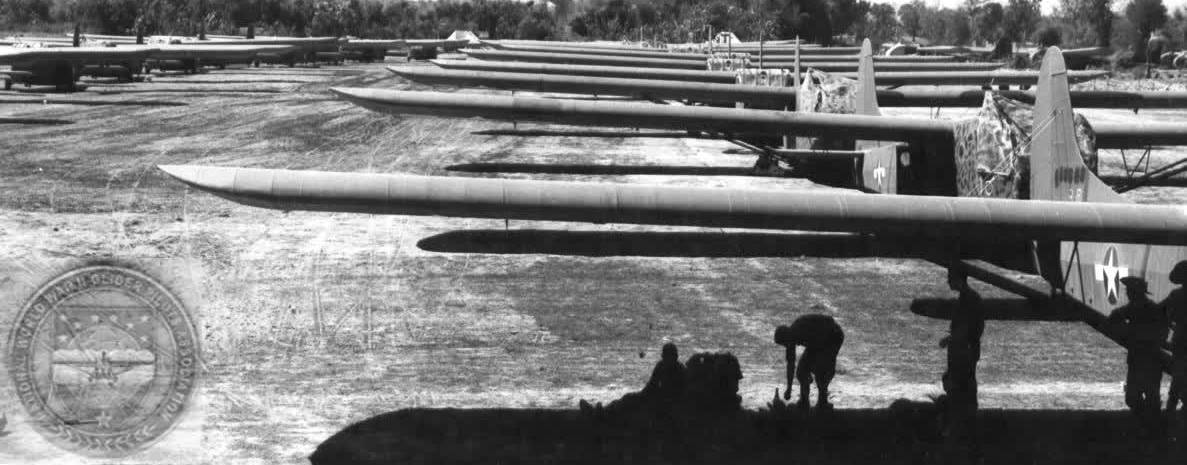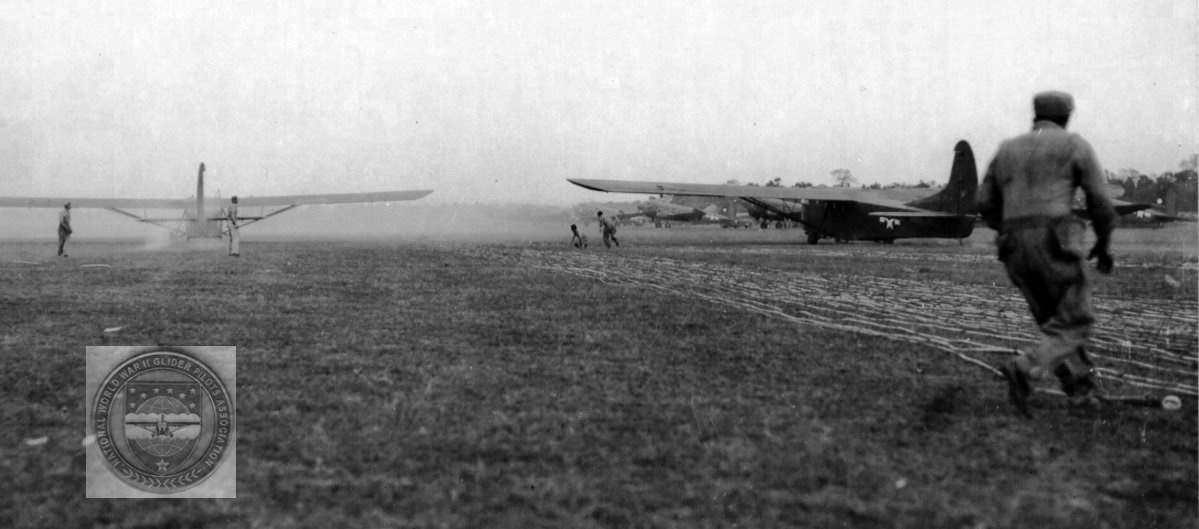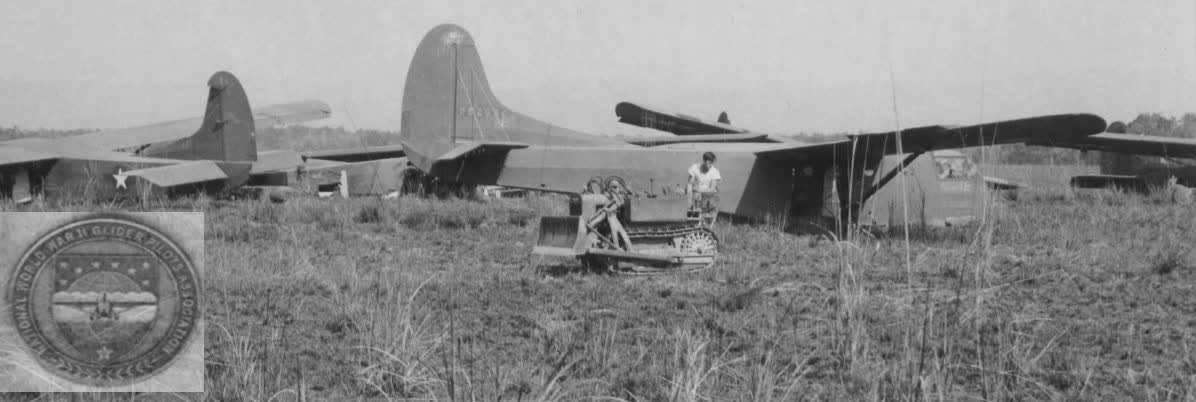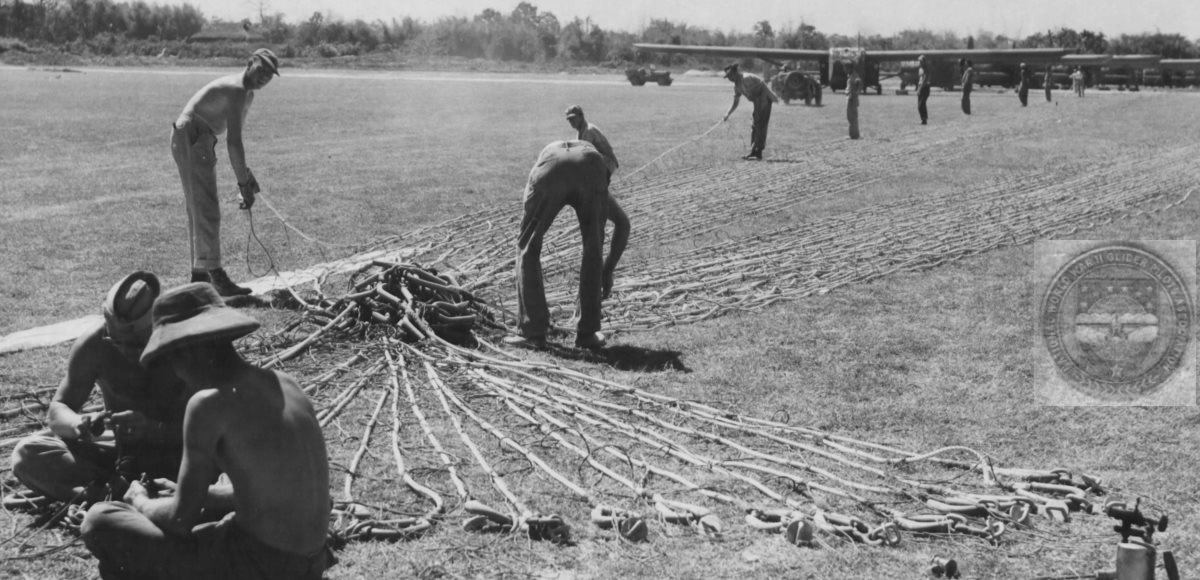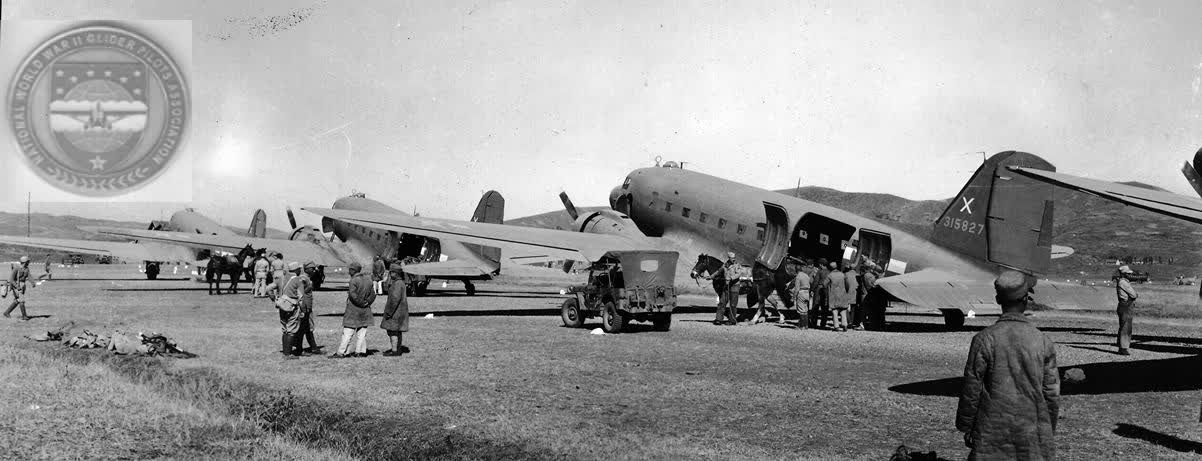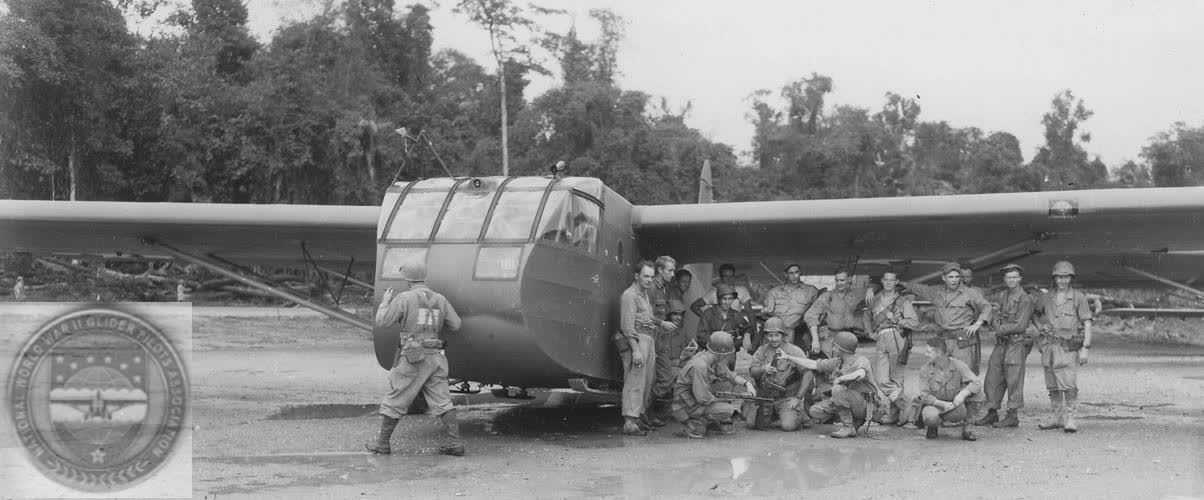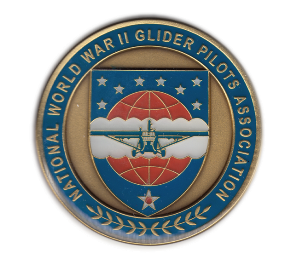National WWII Glider Pilots AssociationLegacy Organization of veterans National WWII Glider Pilots Association. Discover our History, Preserve our Legacy | ||
SerialAir Invasion of Burma - March 5 --- March 11, 1944The task for the US air commandos was to insert Orde Wingate and his Chindits far behind enemy lines and support them against Japanese forces. by John T. CorrellEditor in chief of Air Force Magazine for 18 years, is now an Air Force Magazine contributing editor. Air Invasion of Burma was first published in Air Force Magazine in November 2009. Reprinted by permission from Air Force Magazine. The British military establishment was not fond of Orde C. Wingate. He was eccentric in personal habits and unconventional in his tactics, a practitioner of irregular warfare in the mold of T. E. Lawrence - the famed “Lawrence of Arabia” - who was in fact a distant cousin. Wingate wore an old pith helmet that he had gotten in Africa. When on campaign, he let his beard grow to save the five minutes of shaving time in the morning. He quoted Aristotle, Plato, and the Old Testament. He ate quantities of raw onions between meals and carried a small alarm clock instead of a wristwatch. Some thought Wingate a genius; others regarded him as strange and counterproductive. In February 1943, Wingate, then a brigadier general, introduced a “long-range penetration” strategy to break Japan’s hold on Burma. He called his soldiers “Chindits,” after the lion-like statues that guarded Burmese pagodas. Wingate took 3,000 men, Gurkhas and Burmese troops, and 1,000 mules deep into the jungle where they operated inside enemy territory for three months. He faced huge logistics problems. Supplies ran short, casualties were severe because of inability to evacuate wounded, and there was difficulty extracting the force at the end of the mission. Support from the Royal Air Force was neither prompt nor sufficient. British military leaders regarded the operation as a costly failure, but Prime Minister Winston Churchill was deeply impressed with Wingate and his determination to take the offensive. Churchill took Wingate along to the Quadrant Conference of Allied leaders in August 1943. Win-gate impressed the President, Franklin D. Roosevelt; the US Army Chief of Staff, Gen. George C. Marshall; and the Commanding General of US Army Air Forces, Gen. Henry H. “Hap” Arnold. All promised to help him. Wingate hoped to return to Burma in 1944 with a larger force and asked the AAF to resupply him by air and get his wounded out. Arnold agreed, but he had more - much more - than that in mind. “We visualized an air commando force, the first in military history,” Arnold said. “Large numbers of Allied ground troops would be conveyed by aircraft deep into Burma, and once there, they would be wholly supplied by air.” To lead the effort, Arnold sent for the two most capable lieutenant colonels he could find. Philip G. Cochran was famous not only for his own achievements but also because he was the model for Flip Corkin in Milton Caniff’s “Terry and the Pirates” comic strip. John R. Alison had been a fighter ace with the Fourteenth Air Force Flying Tigers in China; he was widely regarded as one of the AAF’s best pilots. Both of them balked. Cochran said he did not want to go to some “offshoot side-alley fight over in some jungle in Burma that doesn’t mean a damn thing.” Alison, who had been selected to command a fighter group in England, said, “I don’t think you need me, and I don’t want to go.” Arnold said this was not to be just a light-airplane operation. He intended to give Wingate and his troops more than they had asked for, and to have the AAF play a larger part in the operation than the British expected. Cochran and Alison were going to Southeast Asia to develop and demonstrate a new capability for airpower, he said. Both Alison and Cochran were promoted to the grade of colonel. They agreed that Cochran would command and Alison was to serve as deputy. The organization, dubbed the “Project 9 Task Force,” operated out of a room in the Hay-Adams Hotel in downtown Washington and from an office in the Pentagon. Alison concentrated on recruiting people and obtaining equipment. Cochran went to London to confer with Wingate and Adm. Louis Mountbatten, who would shortly become Supreme Allied Commander Southeast Asia. The project had top priority on everything, backed up as necessary by Arnold’s chief of staff. Cochran and Alison were also freed from the usual burdens of administration. Arnold told them, “To hell with the paperwork. Go out and fight.” They took full advantage of the dispensation. They considered various ways to insert Wingate’s force. Parachute drop would require training for the soldiers and would not work for the mules the Chindits used for transport in the jungle. Furthermore, Arnold’s scheme included building airfields, and the construction equipment could not be parachuted in. Thus Cochran and Alison built their insertion force around gliders. The key to the operation would be the Waco CG-4A Hadrian medium glider, which carried 13 passengers and their equipment or a jeep, a quarter-ton truck, or a 75 mm howitzer. The aircraft inventory that Alison pulled together included 150 of these gliders, which would be towed behind C-47 transports with a 350-foot nylon line. There were 348 aircraft in all, including transports, gliders, P-51A fighters, B-25H medium bombers, light “grasshopper” utility airplanes, and six experimental helicopters. The force consisted of 523 men, all of them volunteers except for Cochran and Alison. Cochran went ahead to India, arriving Nov. 13 with a small party. He found big trouble brewing when he got to Delhi. Wingate, who did not know the extent of Arnold’s intentions, told Cochran that the campaign had been canceled for lack of transport aircraft. Seen It, Done ItMountbatten’s staff doubted Cochran could deliver all that he promised, but Mountbatten was convinced and ordered Wingate’s campaign to proceed. Alison finished up his work in the US and reached India on Christmas Eve. The task force had been renamed the 5318th Provisional Air Unit, and by Jan. 1, all of the men and equipment were in the theater. They settled in at two sod airstrips in the Imphal Valley about 100 miles west of the India-Burma border, the transports and gliders at Lalaghat, and the fighters and light aircraft at Hailakandi. Wingate’s headquarters was close by at Sylhet. The air commandos practiced glider tow with men, equipment, and mules aboard. The mules were stubborn about getting on the airplanes at first but they adjusted, and according to their handlers, they even learned to bank in the turns. For the main insertion operation, the tow planes and the gliders would take off in tandem from the airstrip, but the air commandos were also proficient in a dramatic “snatch” variation in which low-flying aircraft could grab a glider off the ground. The glider was hooked to a towline, which was strung to a loop held 12 feet high between two poles. A C-47 transport swept by at treetop level, trailing a catch line with a hook on the end. The hook snagged the loop, the C-47 accelerated, and the glider was yanked into the air. Inside the airplane, the line was attached to a steel cable wound around a drum, which absorbed some of the shock. In January, the air commandos and the Chindits performed 16 practice snatches. In one instance, 300 soldiers and their mules were inserted by glider into a demonstration site and grabbed out again. Wingate, who was aboard the first glider snatched, had a message for the doubters: “Tell the RAF that I have not only seen it but I have done it.” In late February, the force practiced two covert insertions with glider extraction. In one of them, a C-47 snatched two gliders off a sandbar in the Chindwin River. Command arrangements were loose. The task force was assigned for administration and supply to Tenth Air Force in India and was under the control of Mountbatten as Allied commander in Southeast Asia. However, Cochran reported directly to Arnold by cable and the chain of command did not strictly apply. Cochran had two letters in his pocket. One was personal from Arnold to Mountbatten, saying the task force was exclusively for support of Wingate’s force. The other was from Marshall, backing up Arnold on the task force’s autonomy. Local commanders and in-theater organizations did not like this arrangement, but they bowed, some more cheerfully than others, to orders from Arnold and Marshall. Wingate, now a major general, had three Chindit brigades. One of them would march into Burma. The other two would go in by air. Thirteen C-47s from Troop Carrier Command supplemented the 13 the air commandos had. Troop Carrier Command also provided pilots, but all of the aircraft commanders were from the 5318th PAU because of their glider towing experience. The aerial invasion of Burma was named Operation Thursday. It was set for March 5. The gliders would go in first, land assault teams at two airfields, and suppress any enemy forces found at sites. They would also carry engineers and equipment to build airstrips for C-47s and British Dakotas to land. Two main landing sites, essentially large clearings, in northern Burma were chosen. “Broadway” and “Piccadilly” were named for streets in New York and London. A third backup site, “Chowringhee,” was named for the main street in Calcutta. Since only 26 C-47 tow planes were available, some of the gliders would have to wait until the transports returned from the first wave of landings. Each C-47 was to pull two gliders. Forty gliders would go to Piccadilly, another 40 to Broadway. American and British air forces would provide transports to fly in troops after the initial glider landings. On Wingate’s orders, Cochran would remain at home base. Alison, however, would fly one of the gliders and command the field at Piccadilly. Lt. Col. Arvid E. Olson Jr., the executive officer, would be in command at Broadway. Alison had never flown a glider before, but he made three practice landings the day before the invasion and figured he was ready. Piccadilly Is OutWingate had forbidden flights over the landing sites for fear of alerting the Japanese. On the day of the mission, the air commando photo officer, Capt. Charles L. Russhon, prevailed on Cochran to approve a photoreconnaissance mission by a B-25. Cochran did not tell Wingate. The aerial photos, rush processed, were delivered to the flight line at Lalaghat where the gliders were getting ready to go and where Cochran, Alison, and Wingate saw the pictures at about 5 p.m. There was no problem at Broadway, but hundreds of large tree trunks littered the clearing at Piccadilly from one end to the other. The gliders could not possibly land, and Wingate almost canceled the mission out of concern that the Japanese had discovered the plan and blocked the landing site. (It turned out that the trees had been left by Burmese loggers who used the clearing to dry out their fresh-cut teak logs.) After conferring with Cochran and Alison, Wingate decided to go ahead with the mission with all of the gliders going into Broadway. The takeoff was delayed by less than an hour. The first C-47, towing two gliders, lifted at 6:12 p.m. The transports and gliders climbed out in wide circles to gain enough altitude to cross the mountains, taking 45 minutes to reach 8,500 feet. Broadway was 165 miles behind Japanese lines, located in a river valley within striking distance of the rail line that ran north from Mandalay. The first few takeoffs from Lalaghat were without incident, but then problems developed. Towlines broke. Some gliders had difficulty in takeoff. Some were lost. It was later determined that the Chindits, who had been caught short of supplies in the previous year’s operation, had stowed unauthorized crates of rations and ammunition aboard the gliders, which were already overloaded. Some of the gliders were carrying 2,000 pounds of extra weight. Partway through the first wave, Cochran ordered that each C-47 pull one glider instead of two. The first two gliders cut loose of the tow plane and descended to Broadway, landing safely. The assault teams bounded out on the dead run for the most logical places around the clearing for the Japanese to have placed machine guns. They soon determined that the site was unoccupied and fired a green flare to indicate that they had not been fired upon. It was about 9 p.m. The lead glider towed by the second C-47 was flown by John Alison. His command job at Piccadilly gone, he had joined the formation as backup site commander to Olson, and it was good that he had done so. Olson’s glider was among those that had gone down, and Alison would command the field at Broadway. Alison cut loose of the tow plane and his glider touched down smoothly at 70 miles an hour. By luck, Alison had found one of the few unobstructed paths into Broadway. The gliders behind him were not so fortunate. The site was not nearly as clear as it had looked in the photos. “From the air it was impossible for us to see large trenches overgrown with grass which crossed the entire field,” Alison said. “The natives logged teak in this area and in the wet season skidded the logs across the ground and down to the river. Many years of this operation had completely rutted this area and the ruts were covered with elephant grass and were not visible from the air. They formed perfect glider traps, and there was no way of avoiding them. “The gliders began immediately to arrive overhead in large numbers, and when a glider starts down there is no way to stop it. As each glider would hit the trenches, the landing gears would come off, and down the gliders would go in a heap. We tried to arrange the lights to spread the gliders all over the field to avoid collisions, but this was impossible. The gliders were coming in too fast to change their directions, and glider after glider piled into each other in the landing area.” The only available radio set was damaged in landing, but the operator got it working long enough to dispatch a short message to Cochran to hold the rest of the gliders. Alison took charge of the chaos and, incredibly, managed to get most of the men and equipment down with limited casualties. That night, the gliders delivered 539 men, three animals, and 65,972 pounds of stores, including bulldozers and lighting apparatus. Of the 67 gliders that departed for Broadway, 32 got there, 20 were lost en route, and 15 turned back. Alison asked his engineer how long it would take to make an airfield. “If I have it done by this afternoon, will that be too late?” the young officer asked. Within 24 hours, the engineers had cleared and prepared an airstrip 300 feet by 5,000, and C-47s were coming in. Wingate was aboard the first one. Alison, still acting as ringmaster, increased the rate of transports into Broadway to 16 an hour. Impressed, Air Vice Marshal John E. A. Baldwin, commander of the Third Tactical Air Force, said, “Nobody has seen a transport operation until he has stood at Broadway under the light of a Burma moon and watched Dakotas coming in and taking off in opposite directions on a single strip at the rate of one takeoff or one landing every three minutes.” The Chindits spread out, tearing up Japanese lines of communication and railroad tracks, destroying supplies, and engaging the enemy in pitched battles. On the second night, 12 gliders landed at the Chowringhee backup site, about 50 miles south of Broadway. The first glider into Chowringhee was flown by Flight Officer John L. Coogan, known to the American public as former child star Jackie Coogan and ex-husband of actress Betty Grable. Operation Thursday ran for six days and six nights. During that time, 9,052 troops, 175 horses, 1,283 mules, and half a million pounds of supplies were flown in by Troop Carrier Command, the RAF, and the 5318th, renamed the 1st Air Commando Group by Arnold. Most of the deliveries were by the C-47s. The gliders made 74 flights in all. The AAF generally regarded the gliders as expendable, which was just as well. Their loss rate was 85 percent, mostly from the first night at Broadway. The only C-47 loss was an aircraft that pranged into a water buffalo while landing at Broadway at night. Word from Arnold and IkeThe air commandos continued to support Wingate with fighters and bombers pounding the Japanese, light airplanes lifting Chindit casualties from openings in the jungle, and other aircraft delivering and dropping supplies and providing battlefield intelligence. Where the Chindits went, the air commandos went. Wingate made the rounds of the battle area and jungle sites regularly, and it was nearly always Alison who flew him. However, Alison was otherwise occupied on March 24 and a different pilot was at the controls of Wingate’s airplane. A B-25H left Broadway, made an intermediate stop at Imphal, and took off for Wingate’s headquarters in India. It never got there. The airplane crashed into the side of a mountain and exploded, killing all aboard. Four days later, Alison departed the theater in response to two radio messages. The first said, “Report to me without delay,” and was signed Arnold; the second said the same thing and was signed by Eisenhower. With approval from Arnold, Alison stopped briefly en route to confer with Eisenhower, who was planning to use gliders in the D-Day invasion in June and wanted to hear about the experience in Burma. Arnold assigned Alison to organize more air commando groups, which he did, deploying with one of them to the Southwest Pacific where he finished the war as operations officer for Fifth Air Force. The Chindit brigades fought their last engagements in May 1944 and pulled out of Burma, mining the Broadway site as they left. Monsoon rains made the sod landing fields in the Imphal Valley unusable and Cochran pulled the air commando group back to Central India. Cochran himself departed on May 20, 1944. He went first to Washington, where he conferred with Arnold, and then on to Europe, where he served on Eisenhower’s staff. Without Wingate, enthusiasm for long-range penetration dwindled. US and British armies in the Burma-India Theater returned to more traditional strategies. The air commandos continued to provide support in Burma, but there were no more big missions in the style of Operation Thursday. Opinion was divided about the effectiveness of the Chindit campaign. In death as in life, Wingate inspired both admirers and detractors. However, Operation Thursday had proved that a large force could be inserted and sustained completely by air. Cochran and Alison are recognized as founders of the air commandos, and appeared together at a program at Hurlburt Field, Fla., in 1963, where they were honored as the originators of Air Force special operations. Cochran, in poor health, retired from the Air Force in 1945. He died in 1979. Alison had several careers: assistant secretary of commerce for aeronautics, major general in the Air Force Reserve, and industry executive as well as president, chairman of the board, and longtime national director of the Air Force Association. Alison, who will be 97 this month, is still active as a member of the AFA Senior Leader Advisory Group, and tells a spellbinding story of that moonlit night in Burma in 1944. |
BURMA
Awards THURSDAY
Awards CHOWRINGHEE
Locating F/O Robert Hall
Burma Compalation of Info.
The Beginning of Special Operations
Flight Officer Shimulunas
First Published in Briefing 2020
Locating FO Robert Charles Hall
First Published in Briefing 2021
Flight Officer John (Jackie) L. Coogan
First Published in Briefing 2022
Glider Retrieval by Jungle Moonlight
Mules in Gliders
Randal Baily interviews Glider Pilot Tim Baily about Liberating Prisoners of Pergu, Burma “Jungle Rescue” glider snatch.
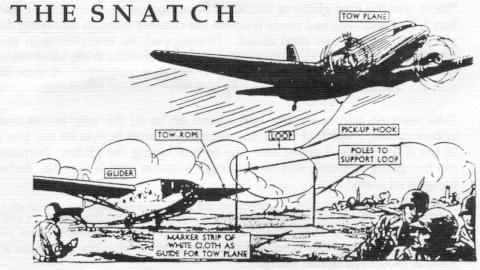
Used effectively in Burma! After unloading equipment loaded up with stretcher and walking wounded and then snatched out. Returned to Hospital in about 2 hours as opposed to two months by ambulance.
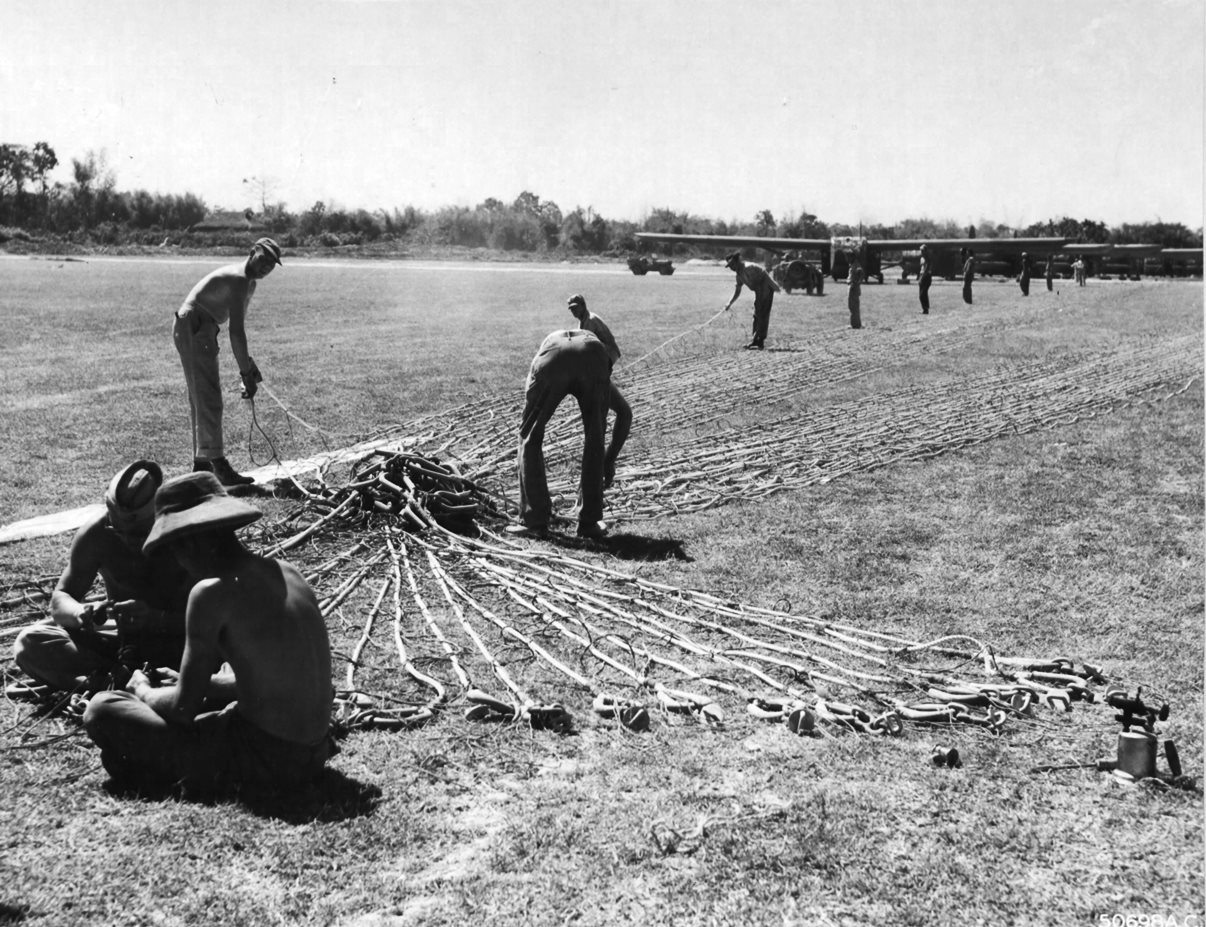
Setting out the tow ropes to hook up the gliders.

